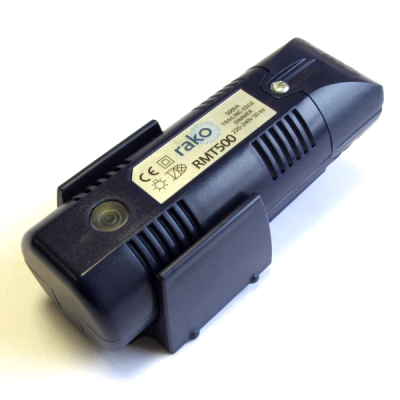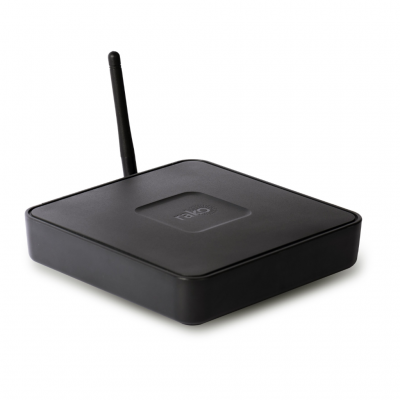
Warmth in Your Home: UK’s Indoor Lighting Design Concepts
Importance of Indoor Residential Lighting Design: In the world of interior design, lighting plays a crucial role in setting the mood, creating ambience and functionality within residential spaces. UK indoor residential lighting design has seen a significant shift in recent years, with increased attention being paid to the aesthetic and practical aspects of lighting. As homeowners strive to create a beautiful and comfortable living space, the demand for innovative and bespoke lighting solutions has grown exponentially.
Current Trends in UK Indoor Residential Lighting Design: The UK indoor residential lighting design industry is currently booming with a mix of minimalist, sustainable, and elegant design patterns. The use of LED technology, smart lighting systems, and statement fixtures has captivated the attention of those looking to transform their interiors. These current trends aim to promote energy efficiency, adaptability to different styles of interiors, and environmentally friendly solutions.
Understanding the Basics of Indoor Lighting Design
Types of Lighting in Interior Design: Ambient, task, and accent lighting are the three primary categories of interior lighting design. Ambient lighting is a soft, evenly distributed form of light that provides general illumination in a room. Task lighting, on the other hand, focuses on a particular area to facilitate activities such as reading, preparing food, or working at a desk. Accent lighting creates visual interest and highlights specific elements in a room, such as artwork, architectural features, or focal points.
Role of Lighting in Home Décor: The proper combination of lighting types can create a visually appealing and functional living space. Lighting can emphasise the colour scheme, architectural features, and artwork, and it also shapes the perception of space. A well-thought-out lighting plan is essential in balancing the aesthetic and practical aspects of a home decor, making the space feel warm, inviting, and dynamic.
The Art of Lighting Design
Expert Advice from Top UK Lighting Designers: The key to achieving a successful indoor residential lighting design is understanding what emotions and functions you want the light to evoke. Prominent UK lighting designers recommend assessing the room first, considering its size, purpose, and overall style. Additionally, adopting a layered approach that incorporates ambient, task, and accent lighting can create depth and interest, while incorporating dimmers and smart controls adds flexibility.
Creating Statement Lighting Schemes: Combining creativity and functionality is instrumental in creating eye-catching lighting schemes. Many UK designers suggest using unique features such as oversized pendants, sculptural chandeliers, or industrial-style fixtures to establish a statement look. The strategic placement of these statement pieces can enhance the room’s overall appeal while maintaining the ideal lighting levels for both practicality and aesthetics.
Lighting Design Services in the UK
Overview of Top UK Lighting Design Companies: Several renowned companies, such as John Cullen Lighting, Sally Storey Design, and Light House Designs, offer comprehensive lighting design services in the UK. Many of these companies specialise in bespoke residential lighting, providing tailored solutions that cater to the needs and preferences of their clients.
What to Expect from a Lighting Design Service: Professional lighting design services in the UK offer assistance to homeowners in creating the perfect lighting plan according to their requirements. These services typically involve an initial consultation, followed by concept development and detailed planning. Clients are often presented with various design options and recommendations for high-quality fixtures and fittings that best match their desired style and budget.
Practical Tips for Indoor Residential Lighting Design
How to Light Every Area of Your Home: Achieving an effective lighting plan requires implementing tailored solutions for various areas of your home.
- Living room: Combine ambient, task, and accent lighting to create a multi-functional and flexible space. Use floor lamps for reading, table lamps for atmospheric lighting, and indirect ceiling lighting to highlight architectural features.
- Kitchen: Pay special attention to task lighting for work surfaces, while strategically placed pendants can provide visual interest and enhance the overall design.
- Bedroom: Place bedside table lamps for focused task lighting, while dimmable overhead lights allow for ambient and mood setting features. You can also introduce accent lighting to highlight artwork or architectural elements.
- Bathroom: Ensure safety and adherence to regulations for wet areas while combining ambient and task lighting for practicality and subdued elegance.
Sourcing Vintage Designs for Unique Lighting Effects: To infuse a sense of character and historical charm, consider incorporating vintage lighting designs in your living space. UK-based antique shops, flea markets, or online platforms like eBay and Etsy offer an extensive range of unique vintage pieces that can become the focal point of your room’s design. Restored and repurposed items can create a distinct ambience that captures the essence of a bygone era while offering an aesthetically pleasing blend of old and new.
Conclusion
The Impact of Well-Designed Lighting on Residential Spaces: A well-executed UK indoor residential lighting design has the power to transform your living space, making it not only visually stunning but also functional and comfortable. By considering the principles of ambient, task, and accent lighting, along with incorporating smart controls and unique design elements, homeowners can create an inviting atmosphere that seamlessly integrates with their personal style and decor.
Future Trends in UK Indoor Residential Lighting Design: With continuous advancements in technology and a growing emphasis on sustainability and energy efficiency, the future of UK indoor residential lighting design offers boundless possibilities. From adaptable smart systems that allow for precise control and customisation to expanding options for eco-friendly materials and energy-saving fixtures,UK indoor residential lighting will continue to evolve, enhancing the quality of life within our homes and contributing to a more sustainable world.

The Power of Lighting Controls in Residential Lighting Design
Lighting controls play a significant role in enhancing the overall experience and ambience within a living space. With the introduction of various technologies and smart systems, homeowners can now benefit from a myriad of options that allow for mood lighting, light dimming, automation, and app control. Let's explore the potential and advantages of these advanced features.
Mood Lighting
Mood lighting enables homeowners to create different atmospheres within a room by adjusting the intensity, colours, and temperature of the light. By tailoring the illumination to specific moods or occasions, spaces can instantly feel more intimate, warm, energising, or relaxing. Advanced lighting control systems often include pre-set mood options, making it easy to switch between different atmospheres with a simple push of a button or screen tap.
Light Dimming
Light dimming allows for greater flexibility and control over the brightness levels within a room. Dimmer switches can be incorporated into various lighting fixtures, enabling users to adjust the intensity according to their needs and preferences. This feature not only enhances the versatility of residential lighting design but also helps conserve energy by reducing the amount of power consumed when lights are dimmed.
Lighting Automation
Homeowners are increasingly turning to lighting automation for added convenience, energy efficiency, and heightened security. By integrating lighting controls with smart home systems or platforms, users can create custom schedules, automate specific lighting scenes, and even set the lights to turn on and off based on occupancy detection or daylight availability. Lighting automation delivers an enhanced living experience tailored to individual lifestyles and preferences.
Lighting App Control
The advent of smartphone applications for lighting control has revolutionised the way homeowners interact with and manage their home illumination. Through app-based control systems, users can remotely adjust lighting settings, create custom scenes, and monitor energy usage directly from their smartphones or tablets. Lighting apps can also be integrated with voice-activated devices, such as Amazon Echo or Google Home, providing a seamless and hands-free control experience.
By incorporating these advanced lighting control features into UK indoor residential lighting design, homeowners can effortlessly create dynamic and adaptable living spaces that cater to their individual needs. Whether setting the mood for a relaxing evening, optimising energy consumption, or ensuring a well-lit home at all times, the possibilities that modern lighting controls offer are both endless and exciting.

FAQs
What are the three main types of lighting in interior design?
Ambient, task, and accent lighting are the primary categories of interior lighting design. Ambient lighting provides general illumination, task lighting focuses on specific areas or activities, and accent lighting highlights particular elements or features in a room.
What are some popular trends in UK indoor residential lighting design?
Current trends in UK indoor residential lighting design include the use of LED technology, smart lighting systems, energy-efficient solutions, and eye-catching statement fixtures. These trends focus on sustainability, longevity, and adaptability to various interior design styles.
How can lighting controls be used to create a customised and comfortable living space?
Lighting controls allow homeowners to adjust various aspects like colour temperature, intensity, and timing, enabling them to create tailored atmospheres and moods. Features such as dimming, automation, and app control offer flexibility, convenience, and energy efficiency while enhancing the overall living experience.
How can I incorporate vintage lighting designs into my home?
To add a touch of historical charm and flair to your living space, source vintage lighting fixtures from antique shops, flea markets, or online platforms like eBay and Etsy. Restored and repurposed vintage pieces can create a unique ambience, blending old-world elegance with modern-day functionality.
Why is it essential to have a well-thought-out lighting plan for every area of a home?
A well-planned lighting design ensures that each room serves its intended purpose with optimal functionality while maintaining a visually appealing and inviting atmosphere. By carefully considering the balance of ambient, task, and accent lighting in each space, homeowners can create a comfortable and harmonious living environment.

Rako Lighting Controls Systems

Rako Keypads

Rako Dimmers




















